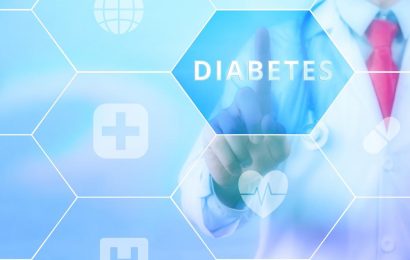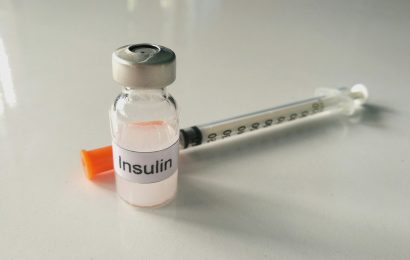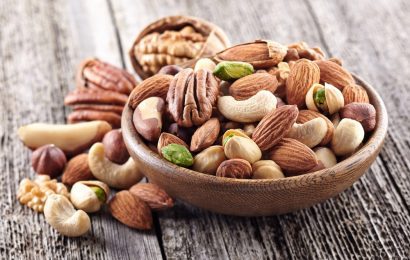Do you wake up with a blood glucose level that’s higher than when you went to bed? You might wonder how this could be. Is this “dawn phenomenon” serious, and what can you do about it?
Our reader Mishelle commented here, “I don’t eat [much] during the day. [I take metformin morning and night.] My blood sugar is still too high in the morning…sometimes 125–140ish.”
How can Mishelle’s glucose levels go up if she didn’t eat anything? She probably has a mild case of dawn phenomenon. Her glucose is going up from sources other than digested food. Some of it is produced by the liver from stored starch and fatty acids. Livers that produce too much glucose are one of the main ways diabetes causes high blood glucose levels. Other organs also produce small amounts of glucose. This is called “gluconeogenesis” for you science freaks out there.
Organs do this to keep blood glucose from going too low at night or other times of not eating. From about 2 AM to 8 AM, most people’s bodies produce hormones, including cortisol, glucagon, and epinephrine. All these hormones increase insulin resistance and tell the liver to make more glucose. The idea is to get you enough glucose to get out of bed and start the day. The whole process is apparently started by growth hormones.
Everyone has a dawn phenomenon. Otherwise they’d be too weak to get breakfast. But in people without diabetes, insulin levels also increase to handle the extra glucose. People with diabetes can’t increase insulin levels that much, so their early morning blood glucose levels can rise dramatically.
Experts disagree on how many people have a dawn phenomenon. Estimates range from 3% to 50% of Type 2s and from 25% to 50% of Type 1s.
Is dawn phenomenon a serious problem?
It can be serious. According to the American Diabetes Association, “Some people with dawn phenomenon find that their glucose continues to rise until they eat in the morning. For others, levels will settle down a few hours after waking, regardless of whether or not they eat.”
Either way, that can be a long time to spend with elevated blood glucose levels. For some people, like Mishelle, the highs aren’t that dangerous. Others go much higher.
According to columnist Wil Dubois, the higher your A1C, the more likely you are to have a significant dawn phenomenon. It could be that spending a number of hours each morning out of control is having a significant effect on your overall control.
So it’s worth trying to get dawn phenomenon under control. How can you do that? You have to figure out what is triggering it and then try some possible solutions.
Some people have high glucose levels in the morning because their medicines wear off overnight. This could be true of medicines such as insulin, sulfonylureas, and metformin. If you are taking any long-acting medicine, consider asking your doctor about changing meds, doses, or times. Our reader Mishelle might benefit from taking her metformin later in the evening, for example. Metformin is good at keeping a lid on the liver.
In some cases, medicine can be too strong. If your glucose goes too low in the night, you could have a rebound high in the morning. This is called the Somogyi effect. Wil Dubois says, “If you are waking up high and are suffering pounding headaches, or find your sheets sweat-soaked, the odds are you are having lows in your sleep…You need to visit with your doctor about taking less meds.
According to Dubois, the new insulins are much less likely to cause a Somogyi reaction. But because of cost, people are going back to NPH insulin. NPH is cheaper, shorter-acting, and more likely to cause a low, leading to a rebound high in the morning.
What can you do to reduce or eliminate dawn phenomenon? Diabetes blogger David Mendosa says many things work for some people and not for others. People report blocking the dawn phenomenon with a green apple or a resistant cornstarch product at bedtime. These might keep a low, steady level of glucose coming and might prevent nighttime lows and highs.
Not eating at all after 7 PM probably won’t help. It will set you up for a Somogyi rebound. A protein snack like nuts or cheese at bedtime might help. But you will have to experiment and keep records for yourself. Everybody is different.
Mayo Clinic doctor Maria Collazo-Clavell, MD, says avoid carbs at bedtime. She also says an insulin pump can help a lot. You can program it in advance to increase your insulin when the dawn phenomenon starts to kick in. You might have to check a few middle-of-the-night levels to find out when the phenomenon starts for you, or if you are going too low.
Vinegar might be another option. You can take tablets or a liquid. Most people I’ve read commenting on various sites needed 4–6 vinegar tablets at bedtime to avoid a morning spike. There’s not much research, though vinegar has been shown to reduce insulin resistance.
Hope this helps, Mishelle. Readers, do you have other ideas? What have been your experiences with dawn phenomenon?
Want to learn more about the Somogyi effect? Read “Somogyi Effect,” by contributing editor Robert S. Dinsmoor.





